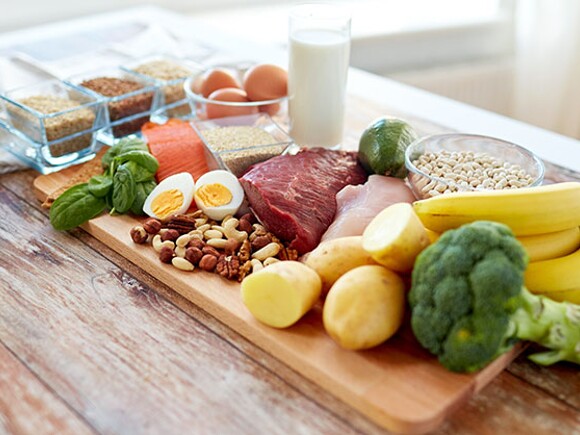Why You Shouldn’t Force Picky Eaters – And What Works Better
Does your child refuse to eat anything except fried chicken? We hear you. Many moms struggle to get their toddlers and preschoolers to try new food. We know they need a proper and well-balanced diet. The challenge is to make them eat it! Try these tips to get them to eat healthy, organic food without turning meal time into a tearful battle of wills.
The Real Issue
Recognize that your toddler isn’t really obsessing over food, but independence. “It’s not the green beans, the peas, or even the elusive dessert that's upsetting them. A lot of the time it’s a control struggle,” says Dina Rose, PhD, sociologist and author of It’s Not About the Broccoli.
When we act like the Food Police – nagging, getting angry, our entire body language communicating that we are forcing them to eat something – they fight back. “The refusal to try that food is an expression of fear or other feelings. Control and being able to control their own food environment is the primary problem,” explains Rose.
Schedule meals and snacks at similar times
According to the The Mayo Clinic, since our child’s food preferences haven’t matured yet, we can prevent mealtime battles by not forcing kids. Instead, serve meals and snacks at the same time everyday.
Serve small portions to avoid overwhelming your child. Give him or her the opportunity to independently ask for more. Keep serving the new food (read: healthy choice) with their favorite food, introducing it gradually until they become familiar. Keeping a food log is helpful for tracking their diet.
Reinforce the milk drinking habit
The Philippine Society of Pediatric Gastroenterology and Nutrition recommends children to drink breastmilk or milk substitutes appropriate for their age: 2 to 3 cups for children (2 to 8 years) old, 2 cups for (9 to 12) years old.
If you have weaned your child, try organic milk. Be sure to read the label, which usually states: “100% certified organic” (unprocessed, no added ingredients), “organic” (up to 95% organic ingredients), or “made with organic____” (at least 70% organically produced ingredients).
Remove distractions during meal time
Encourage your child to stay at the table for designated mealtimes through social interaction. Teach him to focus on eating and not TV or gadgets. Talk about the food served—color, shape, aroma, and texture. Even if he doesn’t eat, let your child stay at the table to talk or interact with the family.
Involve children in food preparation
If you involve children in healthy food preparations, they are more likely to eat appropriately. Bring them to the grocery store and let them choose from a selection of fruits and veggies, and other healthy food.
At home, give them the responsibility of washing fruits and vegetables. You can also cut food into various shapes with cookie cutters (bring out that bento kit!) so they can pick what design they want. Train them to set the table, too.
Always take the opportunity to expose them to healthy food—watch vegan pasta and pizza-making demos, bring them to an organic food fair, or enroll in a sushi-making class together.
Sneak in healthy ingredients without sacrificing flavor
Add to the fun by adding dips for crackers and fruits/veggies. Try these kid-friendly dip combos: cheese and cauliflower dip, cream cheese and avocado, carrot and chick peas, or pizza flavored hummus using marinara sauce and garbanzos.
Have frozen fruits ready for smoothies: bananas and berries are the easiest to combine and kids would have no trouble drinking it. You can also add milk for a power-packed drink. Smoothie popsicles are also perfect treats for picky kids.
There are many readily available recipes that allow you to sneak in healthy ingredients. Pick your weapon: frittatas, pancakes, oatmeal, meatballs, homemade pasta, casseroles, wraps, burgers, breads, cookies, Whether sweet or savory, you won’t run out of ideas with these.
Lead by example
Children see, children do. Studies have shown that children acquire the eating habits of their parents, so modeling the behavior is a must. If you eat a variety of healthy foods, your child is more likely to do the same.
Reference
About The Writer
Kim Reyes-Palanca
Former magazine editor-turned-freelance-writer/columnist/stylist, Kim’s work revolves around creative pursuits. For 14 years, this mum of two boys has been delving into beauty and wellness, fashion, travel. She finds equal joy in styling shoots as much as styling her kids, and their DIY parties. As a work-at-home mum, she strives to be a mindful mother through Pilates and meditation. Her me-time consists of coffee breaks, binging on documentaries (and desserts), and obsessing about the details of whatever project is at hand.
The views and opinions expressed by the writer are his/her own, and does not state or reflect those of Wyeth Nutrition and its principals.
A Victim of Mom Shaming? How to Handle It With Class by Lei Dimarucut-Sison, Source: https://www.smartparenting.com.ph/parenting/real-parenting/how-to-handle-mom-shaming-with-class-a00061-20190524
5 Types of Mom-Shaming—and How to Shut Them Down by Charlotte Hilton Andersen, Source: https://www.rd.com/advice/parenting/mom-shaming





























